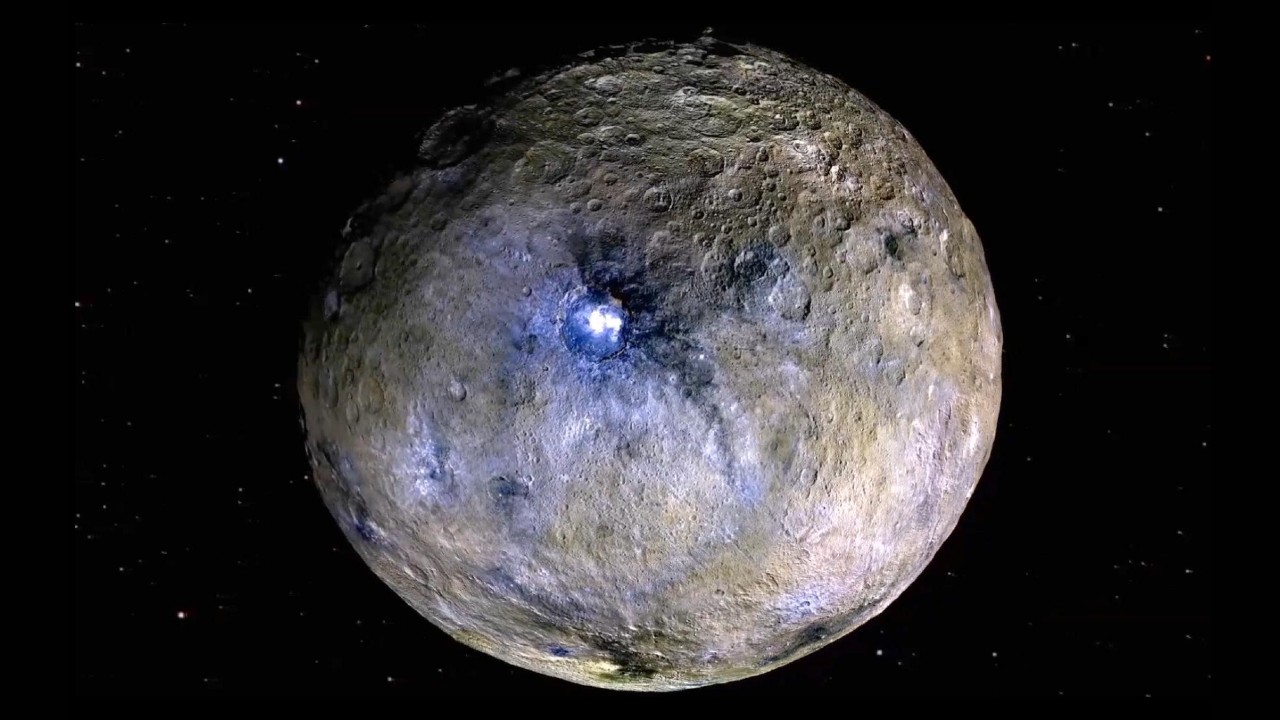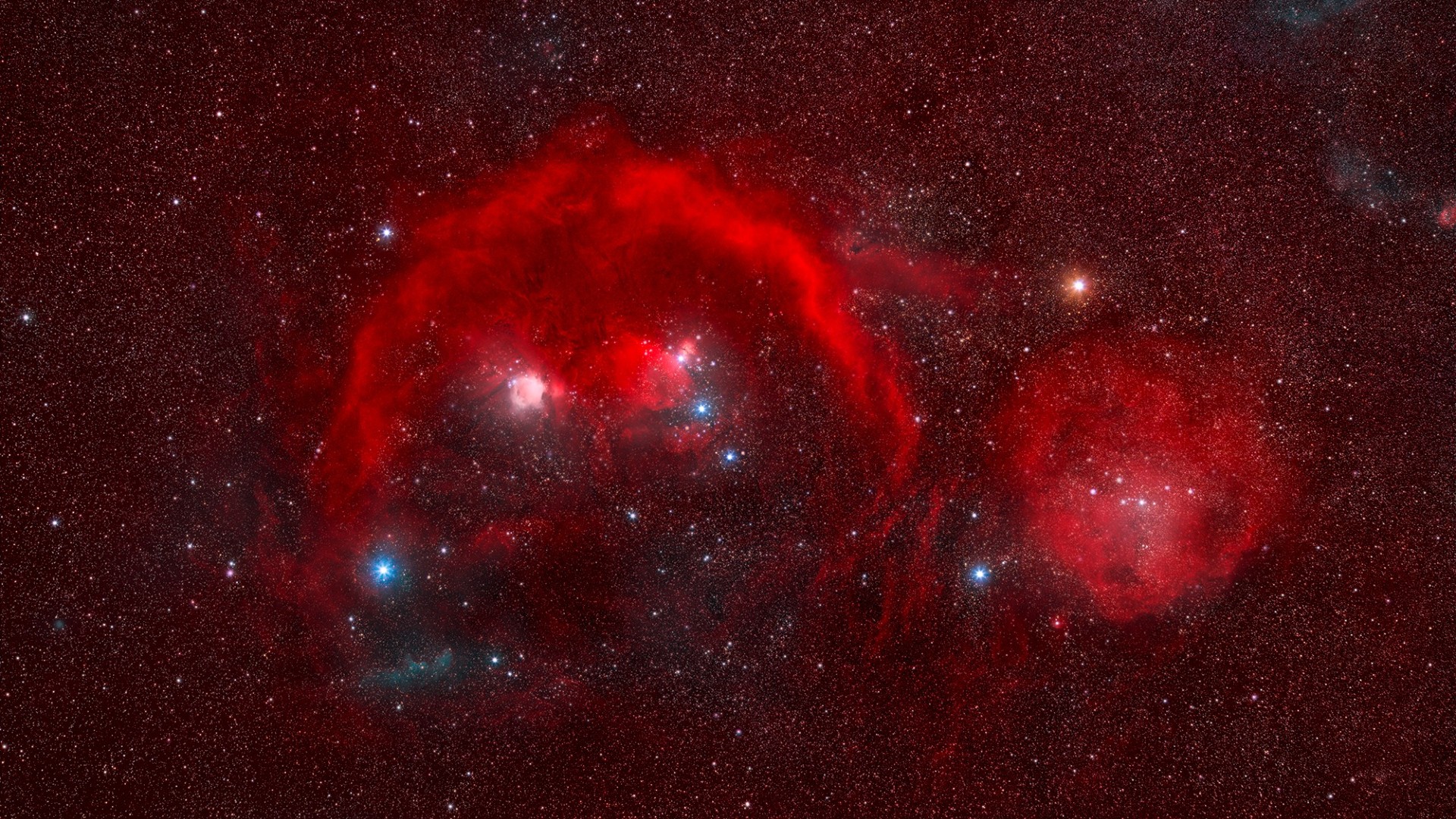Dwarf planet Ceres could be a great place to hunt for alien life. Here's why
Asteroid impacts on dwarf planet Ceres influenced the presence of organic aliphatic molecules, according to new research.

Numerous asteroids that have punctured the surface of dwarf planet Ceres also appear to have influenced its reservoir of precious organic molecules.
In 2017, scientists studying data sent home by NASA's Dawn spacecraft initially spotted organic compounds known as aliphatic molecules near a 32-mile-wide impact crater on Ceres. Since then, they have been trying to pin down the origin of these molecules; few studies suggested asteroids delivered them to the dwarf planet while others concluded they were formed on Ceres itself.
"We are finding that organics may be more widespread than first reported and that they seem to be resilient to impacts with Ceres-like conditions," Juan Rizos, an astrophysicist at the Instituto de Astrofisica de Andalucia in Spain and a co-author of the new study, said in a statement.
Related: Astronomers spy new class of dark, water-rich asteroids like dwarf planet Ceres
To arrive at their conclusions, Rizos and his colleagues carried out a series of experiments mimicking the impact conditions expected on Ceres at NASA's Ames Vertical Gun Range in California, a facility dedicated to simulating the physics and mechanics of impact cratering and asteroid strikes. The team also merged data from the camera and imaging spectrometer on Dawn, and the two datasets together allowed the team to map organic-rich areas on Ceres in greater detail than previously done.
The findings collectively show a "good correlation" of organics with areas hosting older impacts, researchers say, showing that asteroid strikes did indeed influence the presence and abundance of organics across billions of years.
"While the origin of the organics remains poorly understood, we now have good evidence that they formed in Ceres and likely in the presence of water. There is a possibility that a large interior reservoir of organics may be found inside Ceres," Rizos said in the same statement. "So, from my perspective, that result increases the astrobiological potential of Ceres."
Breaking space news, the latest updates on rocket launches, skywatching events and more!
The 2023-2032 decadal survey for planetary science and astrobiology earmarked Ceres as a high priority target for a sample return mission, which might occur several decades into the future.
In the meantime, another NASA probe called Lucy will soon explore 10 trojan asteroids thought to hold clues to the creation of our solar system and even Earth, thanks to hosting material from the early solar system.
"We will likely find differences, as the Trojan asteroids have experienced very different impact histories from Ceres," said Rizos, "and because there are two compositionally different types of Trojan asteroids." Comparing data from the Lucy mission to that gathered by Dawn will help us better understand how these organic molecules are sprinkled throughout the outer solar system, she added.
This research was presented Tuesday (Oct. 17) at the Geological Society of America's GSA Connects 2023 meeting.
Join our Space Forums to keep talking space on the latest missions, night sky and more! And if you have a news tip, correction or comment, let us know at: community@space.com.

Sharmila Kuthunur is a Seattle-based science journalist focusing on astronomy and space exploration. Her work has also appeared in Scientific American, Astronomy and Live Science, among other publications. She has earned a master's degree in journalism from Northeastern University in Boston. Follow her on BlueSky @skuthunur.bsky.social
-
rod "...The findings collectively show a "good correlation" of organics with areas hosting older impacts, researchers say, showing that asteroid strikes did indeed influence the presence and abundance of organics across billions of years. "While the origin of the organics remains poorly understood, we now have good evidence that they formed in Ceres and likely in the presence of water. There is a possibility that a large interior reservoir of organics may be found inside Ceres," Rizos said in the same statement. "So, from my perspective, that result increases the astrobiological potential of Ceres."Reply
My note. Observations show a great deal of catastrophism now for the origin of life via abiogenesis, foundation doctrine for astrobiology. Space.com articles discuss this issue too in recent reports. Same problems for abiogenesis remain as previously discussed.
https://forums.space.com/threads/alien-life-may-not-be-carbon-based-new-study-suggests.63274/
https://forums.space.com/threads/meteorites-and-volcanoes-may-have-helped-jump-start-life-on-earth.61544/
https://forums.space.com/threads/solar-superflares-millions-of-times-stronger-than-anything-today-may-have-sparked-life-on-earth.61536/
Charles Darwin discussed briefly the warm little pond but acknowledges that life today could quickly devour some type of non-living matter attempting to evolve into a single cell or life. I would point out that any early life that evolved from non-living matter would be faced with quick extinction too from the early earth postulated conditions operating in nature. Here is a 1882 letter of Charles Darwin where he hopes abiogenesis will be shown true in science. To Daniel Mackintosh 28 February 1882, "...With respect to the main purport of your note I hardly know what to say.— Though no evidence worth anything has as yet in my opinion been advanced in favour of a living being, being developed from inorganic matter, yet I cannot avoid believing the possibility of this will be proved some day in accordance with the law of continuity...", ref -https://www.darwinproject.ac.uk/letter/?docId=letters/DCP-LETT-13711.xml&query=general%20law%20of%20nature#hit.rank1
Now abiogenesis must wrestle with all the violent catastrophism operating in the solar system and in the universe too.
